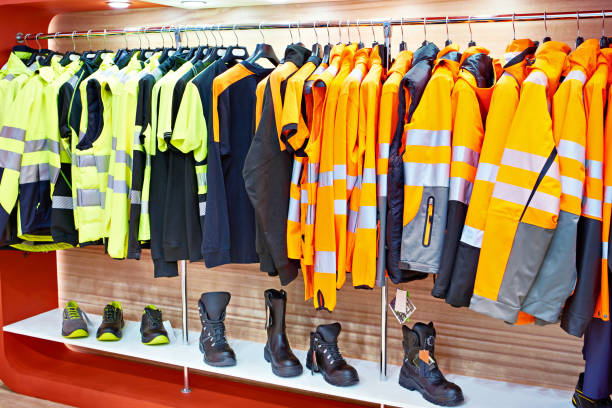The protective clothing market is experiencing robust growth, driven by an increasing focus on safety, hygiene, and innovation. In 2023, the market is estimated to be valued at USD 11.59 billion, and by 2033, it is projected to reach a remarkable USD 21 billion, advancing at a CAGR of 6.1% over the forecast period. The global pandemic has accelerated the demand for protective clothing, with a particular emphasis on medical-grade and antiviral apparel, pushing manufacturers to explore new innovations in fabric technology and design.
Key Factors Driving Market Growth
- Impact of the Global Pandemic The COVID-19 pandemic dramatically shifted the demand for protective clothing. As healthcare workers, frontline responders, and essential personnel required increased protection, the demand for high-quality, medical-grade apparel skyrocketed. The pandemic also ignited a surge in the development of antiviral fabrics designed to reduce the risk of spreading infectious agents, highlighting the untapped potential within the protective clothing industry.
- Innovations in Fabric and Design Manufacturers are now focusing on the creation of more advanced protective clothing. Innovations include the development of breathable, lightweight materials that provide both comfort and protection, as well as fabrics designed to block harmful pathogens. These advances are being applied across industries, from healthcare to industrial applications, broadening the scope of protective clothing.
- Stricter Workplace Safety Regulations The rising stringency of workplace safety regulations, particularly in hazardous industries like construction, oil and gas, and chemical manufacturing, is another critical driver. Employers are increasingly required to provide their workers with personal protective equipment (PPE) that meets rigorous safety standards, boosting demand for high-quality protective clothing.
- Growth in Healthcare and Pharmaceuticals The healthcare and pharmaceutical sectors are major consumers of protective clothing. With the growing number of healthcare workers and the expansion of pharmaceutical manufacturing, the demand for protective garments, including gowns, gloves, and masks, has seen substantial growth.
Key Takeaways from the Protective Clothing Market:
- India dominates protective clothing in South Asia, CAGR 5.8% through 2033.
- China leads set for 5.9% CAGR growth in protective clothing by 2033.
- Germany shines as a key protective clothing hub, foreseeing 6% CAGR by 2033.
- According to insights from FMI, the coveralls segment is poised to exhibit a remarkable expansion, with a projected CAGR exceeding 6.3% in the next ten years.
Emerging Trends Shaping the Market
- Sustainable and Eco-Friendly Materials As environmental concerns grow, manufacturers are increasingly exploring sustainable options for protective clothing. Biodegradable materials and recycled fabrics are gaining traction as eco-conscious consumers and industries look for greener alternatives.
- Smart Protective Clothing The integration of technology into protective clothing is an emerging trend. Smart clothing with sensors that monitor environmental conditions, body temperature, and health metrics are becoming more common, particularly in hazardous industries. This trend is expected to play a crucial role in the future development of protective gear.
- Customization and Ergonomics There is a growing demand for customizable protective clothing that can cater to specific industry needs. Clothing that is ergonomically designed for better fit and mobility is becoming increasingly popular, particularly in industries where workers need to wear protective gear for extended periods.
Competitive Landscape
The protective clothing market is highly competitive, with several key players focusing on product innovation, safety standards, and technological advancements. Some of the leading companies include:
- 3M Company: Known for its wide range of PPE products, 3M continues to innovate in protective clothing with advanced materials and designs.
- DuPont de Nemours, Inc.: A pioneer in fabric technology, DuPont’s Tyvek and Kevlar materials are staples in the protective clothing industry.
- Honeywell International, Inc.: Honeywell offers a comprehensive range of protective clothing, with a focus on integrating technology to improve safety.
Market Segmentation
By Product Type:
- Coveralls
- Vests
- Jackets
- Aprons
- Others (surgical gowns, laboratory coats etc.)
By Material Type:
- Non-Woven
- Woven
- Knit
By End Use Industry:
- Manufacturing
- Oil & Gas
- Healthcare
- Others (transportation, firefighting etc.)
By Region:
- North America
- Latin America
- Western Europe
- Eastern Europe
- South Asia and Pacific
- East Asia
- Middle East & Africa
About Future Market Insights (FMI)
Future Market Insights, Inc. (ESOMAR certified, recipient of the Stevie Award, and a member of the Greater New York Chamber of Commerce) offers profound insights into the driving factors that are boosting demand in the market. FMI stands as the leading global provider of market intelligence, advisory services, consulting, and events for the Packaging, Food and Beverage, Consumer Technology, Healthcare, Industrial, and Chemicals markets. With a vast team of over 400 analysts worldwide, FMI provides global, regional, and local expertise on diverse domains and industry trends across more than 110 countries.
Contact FMI:
Future Market Insights Inc.
Christiana Corporate, 200 Continental Drive,
Suite 401, Newark, Delaware – 19713, USA
T: +1-845-579-5705
For Sales Enquiries: sales@futuremarketinsights.com
Website: https://www.futuremarketinsights.com
LinkedIn| Twitter| Blogs | YouTube
